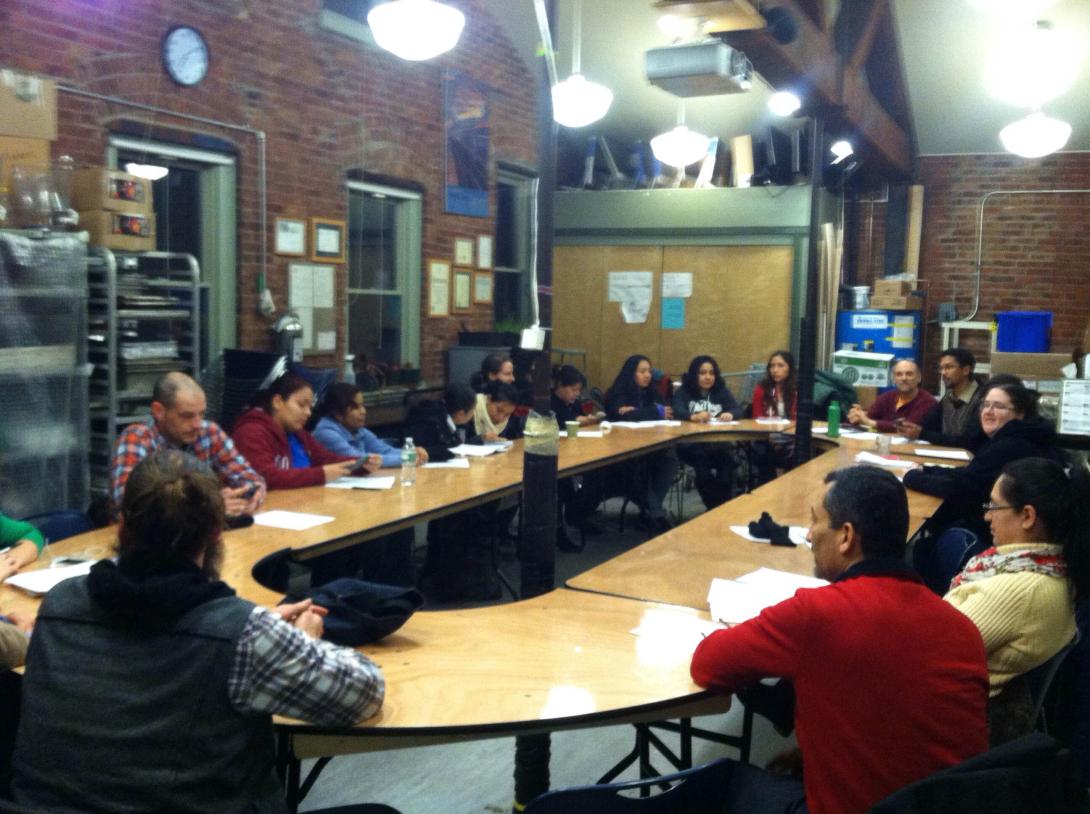
Movements Moving Together 15
by Michael Johnson
Almost two weeks ago I posted a blog asking some pointed questions about the NYC Coalition talking of building an “ecosystem of worker co-operatives.” I likened it to a one-crop system. Today I had an email exchange with Omar Freilla of Green Worker that not only addressed my questions and rebutted my “one-crop” argument, but also informed me of a major development in the NYC co-op world:
Two months ago a historic meeting occurred between worker co-ops, consumer co-ops, and a few co-op support organizations at the Park Slope Food Cooperative. The aim of the meeting was to figure out how both sectors could meet each others' needs.
And Omar sent a picture of the meeting:

Meeting of NYC co-ops at Park Slope Food Co-operative
It was more than just a discussion of common values, etc. The report on the meeting calls on “any worker cooperatives that can meet the needs of the food cooperatives that are expressed in the meeting notes, or that want to be profiled in their newsletter or get advice on products should reach out to the representatives from those co-ops.”
Awesome stuff.
Omar also gave me a direct response to my critical blog:
… I read your blog and have a very different take on the meaning of an ecosystem for worker cooperatives. Social movements are made up of many parts. And the strength of any movement is determined not only by the ability of its parts to work together, but by the strength of each of its parts. In order for cooperatives to become the rule instead of the exception, every kind of cooperative, and all of the institutions they benefit, and are benefitted by, have to be strong as well. NYC has a rich history and infrastructure of housing co-ops, credit unions, and food co-ops. By comparison, the worker co-op sector in NYC, like the rest of the country, is just picking up steam in an attempt to catch up. Each sector has developed an infrastructure of support organizations (trade associations, technical consultants, advocates, financiers) that make their existence possible. Some of these support organizations are structured as co-ops while others are nonprofits. All of them have to navigate the institutions of government. Each of these co-op sectors can be considered to be its own ecosystem by the fact of having many different parts that interact. Together, we make up a larger cooperative ecosystem. And our growth, not just our survival, depends on the ability of all of our interacting systems to efficiently and effectively use what we've got to get what we want.
This was an excellent response to my blog questions, the kind of response I was hoping for: cogent and right to the point. I appreciated it, especially since exposing oneself to the possibility of bad feelings by giving criticism is not easy. I don’t blog to vent, but to dialogue. Well, most of the time at least. But I am eventually open to criticism when I do vent. And I got some pretty intense criticism for posting that blog, much of it not really acknowledging that I was asking questions even though the blog was pretty edgy.
Clearly the initiative with PSFC is in keeping with Omar’s response. Both are the best responses I was hoping for, and I hope both are widely shared throughout the Coalition.
I hope my closing below doesn’t sound like I am trying to get in the “last word,” but I still have very strong concerns about the tight rope the Coalition is on. As I noted in my previous blog:
The Coalition is necessarily embedded in a network of government and social service agencies in order to benefit from large funding. That network has few if any roots in the co-operative networks and culture that has been evolving over the past several hundred years. So the Coalition does have to speak in ways that fit into that situation so that it can operate in that world. At the same time the co-operative identity, values, and principles animating their work challenges them to stay grounded in the larger co-operative network and culture.
This is not an easy challenge. The hot thing in Richmond, CA seems to have come and gone. Evergreen was suppose to be the wave of the future. Confidence is not necessarily an asset, especially when we are in a very, very, very experimental stage. It can also be a devastating blinder.
Go to the GEO front page

Add new comment